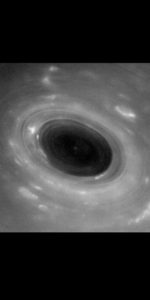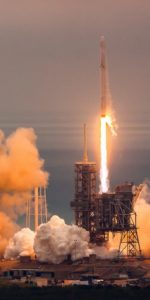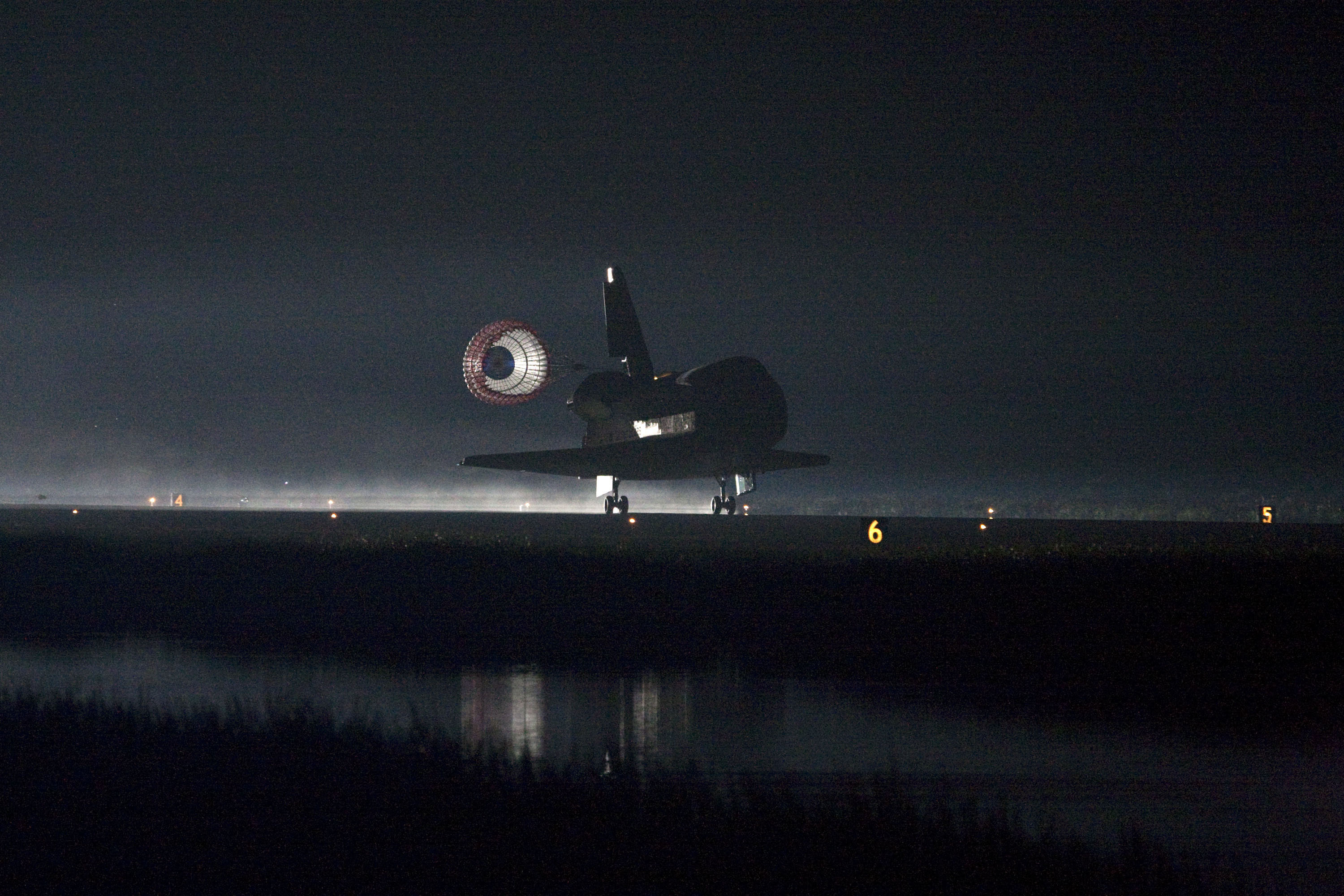
From the moment she left Pad 39B at the Kennedy Space Center (KSC) in Florida, on the evening of 7 May 1992, to the instant her Main Landing Gear (MLG) kissed the concrete of nearby Runway 15 of the Shuttle Landing Facility (SLF) for the final time on 1 June 2011, Endeavour enjoyed one of the most dramatic careers of any member of NASA’s Space Shuttle fleet. From the first (and only) three-person spacewalk to the triumphant salvation of the Hubble Space Telescope (HST) and from the third-longest shuttle voyage ever flown to the first construction mission to the International Space Station (ISS), Endeavour’s stellar, 25-flight career did it all. As the 25th anniversary of Endeavour’s maiden voyage nears, AmericaSpace pays tribute to this remarkable vehicle; a vehicle whose origins came in the ashes of despair and shattered dreams.
That despair and those ashes were sown on the morning of 28 January 1986, when Challenger was lost in the skies above KSC, just 73 seconds after launch. For almost three years, NASA worked to return its now-three-strong fleet of shuttle orbiters—Columbia, Discovery and Atlantis—to nominal operations, before STS-26 brought about a resumption of flights in September 1988. By this time, however, efforts were already underway to build Challenger’s replacement, a shuttle initially saddled with the nameless moniker of “Orbiter Vehicle-105” (OV-105). For Endeavour was born from a series of shuttle “spares”, assembled before the loss of Challenger for fleet repairs or, propitiously, to create a new vehicle in the event of a catastrophic failure. On 28 January 1986, just such a catastrophic failure occurred and NASA’s worst fears were realized.
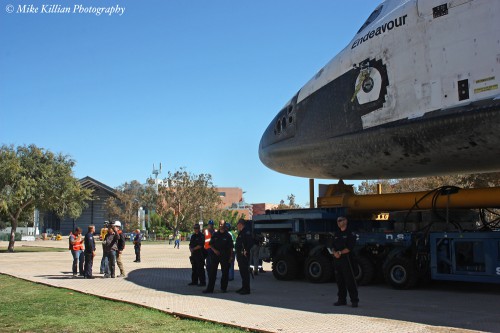
The spares had been built under a $390 million contract between NASA and its prime shuttle contractor, Rockwell International, in April 1983. They included a shuttle aft-fuselage, mid-fuselage, the two halves of the forward fuselage—including the cockpit—as well as a vertical stabilizer and rudder, wings, elevons and aft body flap. In the weeks after Challenger’s destruction, senior members of President Ronald Reagan’s administration and some members of Congress opposed the idea of spending money on another orbiter, arguing that the funds could be better spent on a new space vehicle. But in September 1986, OV-105 was approved and in July of the following year NASA awarded a $1.3 billion contract to Rockwell to build the next shuttle. Three years later, it was structurally complete and powered-up for systems tests in July 1990.
All ships need names and with names honoring America’s national spirit of discovery and exploration having characterized the other shuttles, an Orbiter Naming Program was intiated by Congressman Tom Lewis (Rep.-Fla.) in October 1987. Over the course of the following year, more than 71,000 students from over 6,000 schools submitted ideas and NASA winnowed these down to three finalists: North Star, Endeavour and Horizon.
In May 1989, President George H.W. Bush formally announced that the winning name was Endeavour—spelt in the English fashion, to honor Captain James Cook’s vessel—which had been by far the most popular entry. Between 1768 and 1771, Cook’s HMS Endeavour had sailed to the South Pacific, initially to observe the transit of Venus, in support of ongoing investigations to measure the distance between Earth and the Sun. During the course of the voyage, Cook reached Tahiti and Hawaii, charted New Zealand for the first time and surveyed Australia’s east coast.
When the STS-49 astronauts—Commander Dan Brandenstein, Pilot Kevin Chilton and Mission Specialists Rick Hieb, Bruce Melnick, Pierre Thuot, Kathy Thornton and Tom Akers—were named to fly shuttle Endeavour’s maiden mission, one of their tasks was to design a crew patch. Their design included Captain Cook’s old ship in pride of place, but upon its masts were the colors of the two schools which won the naming contest: Senatobia Elementary School in Senatobia, Miss., and Tallulah Falls School in Tallulah Falls, Ga.
Late in April 1991, Endeavour rolled out of Rockwell’s Palmdale, Calif., facility, and was delivered atop the Boeing 747 Shuttle Carrier Aircraft (SCA) to Florida in the second week of May. However, her targeted launch date for STS-49 in May 1992 quickly became mired in difficulty, as hundreds of problems and deficiencies came to light: faulty cables and connectors, contaminated propellant lines, incorrectly fitted insulation blankets and even a biscuit, mistakenly dropped into the fuselage. By the late summer, up to 70 electrical, hydraulic or mechanical problems were being reported every week.
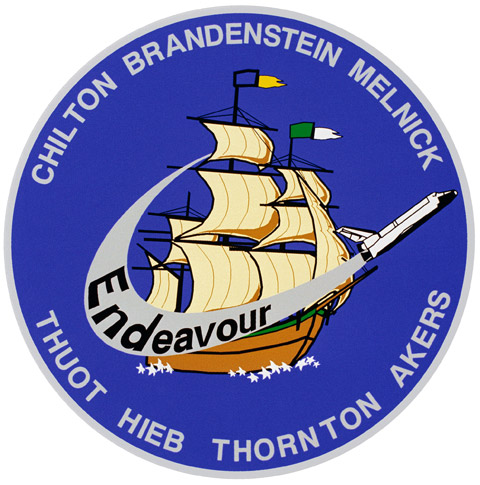
It is therefore quite remarkable that expectations of a delay to STS-49 from May to July 1992 did not materialize. Mounted atop her External Tank (ET) and twin Solid Rocket Boosters (SRBs), Endeavour was rolled out to Pad 39B in mid-March and in the second week of April her three Space Shuttle Main Engines (SSMEs) were test-fired. This so-called Flight Readiness Firing (FRF) was executed before each orbiter’s maiden voyage and served to evaluate systems performance in as close to actual launch conditions as possible.
Outwardly, Endeavour mirrored her sister ships in appearance. But internally, she was far more capable. Her suite of on-board General Purpose Computers (GPCs) carried twice as much memory and were three times faster than their predecessors, as well as being lighter and requiring less operating power. A High-Accuracy Inertial Navigation System (HAINS) would be tested as a potential replacement for the older Inertial Measuring Units (IMUs) and Endeavour was also equipped with enhanced Tactical Aid Navigation (TACAN) systems, two upgraded Master Events Controllers (MECs) and better solid-state trackers. Other improvements had been made to her Auxiliary Power Units (APUs), her gas generators and her fuel pumps. A drag chute had been fitted to enhance landing safety parameters and she was fitted with the plumbing and electrical connections to allow for Extended Duration Orbiter (EDO) missions, lasting up to 28 days.
By the time the STS-49 astronauts boarded Endeavour on the late afternoon of 7 May 1992, the new shuttle was already becoming booked-up for an ambitious raft of missions. Her next crew, the Spacelab-J science flight in September, had been announced, as had another crew, aiming to launch a Tracking and Data Relay Satellite (TDRS) in January 1993. Further downstream, Endeavour was also targeted to capture the European Retrievable Carrier (EURECA) and operate the first commercial Spacehab research module and conduct the long-awaited servicing and repair of the Hubble Space Telescope (HST).
And all of these tasks would be completed in Endeavour’s first five missions—the first fifth of her spaceflying career—and within a span of just 19 months.
Clearly, from the outset, Endeavour was a shuttle with a mission…or, rather, missions. In tomorrow’s history article, AmericaSpace will explore the missions, the challenges and the humor which saw this vehicle complete 25 voyages into space. During those voyages, she would fly seven dedicated science missions, deploy or retrieve a half-dozen satellites for communications, technology development and astronomy, journey to Russia’s Mir space station once and stage no fewer than 12 trips to the International Space Station (ISS). By the end of her career in June 2011, Endeavour would have traveled 123 million miles (198 million km), orbited the Home Planet a grand total of 4,671 times and spent no less than 299 days in orbit.
The second part of this article will appear tomorrow.
Be sure to “LIKE” AmericaSpace on Facebook and follow us on Instagram & Twitter!




